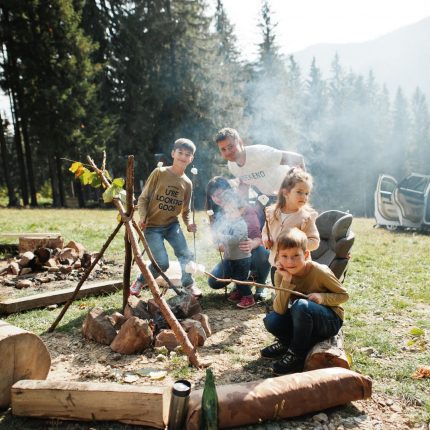
How to Make Homeschooling Fun
August 11, 2020Despite perhaps what most of our children believe, learning can be fun! Furthermore, a lot of students tend to learn better by doing, rather than seeing, hearing, and taking notes, particularly when it comes to subjects like science. Plus, being more hands-on when learning something new is way more interactive and exciting. Of course, it’s important to note that every kid is different in how they learn so it’s always worth trying various learning methods to see what sticks best.
When your children are learning from home though, you might feel restricted with the kind of activities you can do. However, with the right imagination and simple tricks, home-schooling can become a lot more entertaining and still be educational.
Here are some helpful tips to get you started:
The What and Why to Making Home Education Fun
The ways in which we learn, from childhood to adulthood, has been a topic of discussion amongst educators and experts for years. One learning theory, published by psychologist David Kolb, is called the experiential learning theory. The experiential learning cycle outlines how every student has particular habits that then influences their overall learning style. The experiential learning theory has four key learning stages — concrete learning, reflective observation, abstract conceptualization, and active experimentation. Kolb explains that students will enter the cycle at their preferred stage, and as such, creating a learning environment where students of all learning stages can join will help them learn better.
Kolb’s experiential learning theory and its benefits offer:
- Promotion of Teamwork: We know the importance of teamwork in the real-world and experimental learning highly encourages collaboration, which is great if you have more than one child at home.
- Improved Motivation: Kids are likely to be motivated to learn when the subject is interesting and seems less like work and more like fun. Experiments are not only entertaining but can also create more passionate learners.
- Real-world Practice: A lot of the goals in education is to help prepare the next generation for the real world. Experiential learning does a great job of focusing on situations students would encounter at some point in their life which can better prepare them for the future.
One of the main ideas behind Kolb’s learning theory is the importance of incorporating more interactive, hands-on activities, which can often be easier to do when learning from home than at school. Use this at-home teaching opportunity to really elevate your kids’ lessons in ways typical public school teachers often can’t due to classroom size, limited resources, and school restrictions.
And The How to Make Home Education Fun!
As a parent, you likely have enough on your plate that it can be difficult to research and plan out fun learning activities each day for your kids. However, experiential learning doesn’t have to be complicated. Finding ways to turn your children’s lessons into something they’re excited to do just takes the right tools and a bit of creativity. Think outside the box for some activities and then keep it simple in between. A few great experiential learning activities could look like this:
- Growing a Small Garden: If you don’t have space, a windowsill also works great for this task. When gardening herbs, flowers, and even vegetables kids have the opportunity to learn about the life cycle of plants and responsibility through caretaking. You can take this activity a step further by harvesting your bounty when it’s time and then make a lesson around cooking.
- Hunting for Meteorites: When learning about the solar system, consider going beyond looking through a telescope (although that is a fun activity, too!). Instead, try renting a metal detector and search for meteorites — or other treasures from space. While it is rare to find a meteorite, while you’re looking try talking about what a meteorite is, what they look like, and the different kinds of meteorites. You could also talk about different rocks you come across which is great for learning more about minerals and different classification of rocks.
- Getting a Bird’s Eye View: This activity is great if you have a tech-loving kid. There are some simple-to-operate, kid-friendly drones available these days that could turn a regular geography lesson into an exciting and interesting activity. Kids can learn about identifying landforms and take note of important elements occurring within each landscape. This is also a great activity to help with learning how to read a map.
- Chalk it Up: If your kids love art and crafts, making your own sidewalk chalk is not only fun but educational. Kids can learn how to follow a recipe and the importance of measuring and mixing. Once you’ve made your chalk, take it outside for your next art or math lesson, which will also benefit any visual learning children you have.
With all of this in mind, the experiential learning theory may be a great option for many students, but it could also not be the right choice for your children and their particular learning habits. If your child is less of a hands-on learner, there is always the option of focusing homeschooling on other learning methods such as spatial or auditory learning. You can also still incorporate experiential learning when appropriate with these other learning styles.
For your spatial learning child, work together on creating some educational diagrams, pictures, and even doodles on a whiteboard or just sheets of paper. Visual learners tend to learn through observing, so when trying to be more creative and active during homeschooling hours try spending more time writing and drawing. For auditory learners, try singing parts of the lessons or finding catchy songs that can help with memorization. You can also make the lesson into a game show where your kids have to present their learnings to you but in a more relaxed, fun way. Kolb’s theory can often still be applied to spatial and auditory learners, it just needs a bit of adjusting to better meet the needs of different learners.
The possibilities are truly endless when it comes to doing more hands-on activities. Of course, you don’t need to spend a lot of money or buy a ton of equipment to have fun lessons — just work around your budget and your resources. You kids will likely just be happy to be away from their textbooks and desk, while still learning important lessons.
More about the author:
Sam Bowman is a writer who enjoys getting to utilize the internet for community without actually having to leave his house. In his spare time, he likes running, reading, and combining the two in a run to his local bookstore.
Additional Homeschool Resources
Creative Motivation Tips for a Great School Year
100 Educational Activities to Inspire
Latest Posts

As homeschooling continues to grow in popularity, more parents are taking on the challenge of providing a comprehensive education that not only meets academic standards but also prepares their…
Read more >
June has come and gone, and summer is in full swing! Whether you're traveling this summer or staying close to home, we hope you're enjoying this time with your family. We wanted this month's…
Read more >
Summer is an all-around favorite season for most people. In the U.S., it’s even more exciting for many of us since we get to celebrate Independence Day! The Fourth of July is a wonderful…
Read more >

